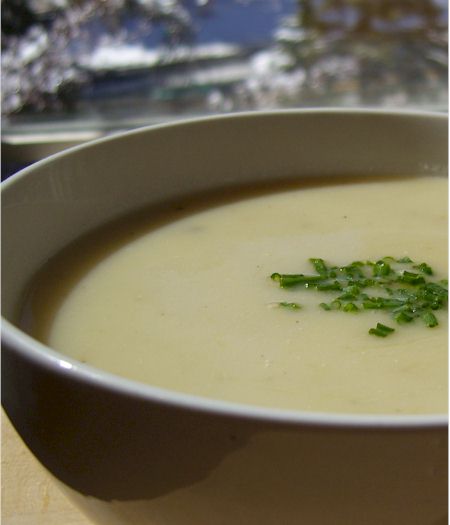So here's how it happened. The first time I made this it worked beautifully. My curds weren't ever so firm that I could cut them with a knife, like the instructions said, but it worked well.
The second time I tried to make it with 1% milk and accidentally added 1 c. water for some insane reason. BAD. I ended up with boiling milk all over my arms and no cheese.
The third time it worked pretty well. I experimented with a whole bunch of things and sort of figured things out.
The fourth time I had six other women watching me and I was extremely nervous. Fortunately, it worked. And I think I've figured it out. I really really hope you all try this, because it is SO COOL to see it actually working! Cheese! In your kitchen! In half an hour!!! It's like the pinnacle of domestic awesomeness.
Things to know before you start:
- The milk available in most grocery stores is probably not going to give you a cuttable curd. It will, however, give you a curd that you can dip out with a slotted spoon (and then pour the rest into a strainer to separate the curds from the whey).
- The longer you let it sit, the firmer your curds. Some recipes say 3-5 minutes, some say 1-2 hours. I've found that about 10 minutes is a pretty good compromise.
- Knead for several minutes--I found that it takes at least 3-4 minutes of kneading to get the silky consistency out of the chunky little curdy lumps.

Homemade Mozzarella
Ingredients: 1 gallon whole milk
1.5 t. citric acid (available at ethnic grocers [Swad brand] or health-food stores)
Approx. 30 minutes from start to finish
1. Sprinkle 1 1/2 t. citric acid over 1 gallon whole milk (in a large non-reactive pot); gently heat to 90 degrees F, stirring occasionally. I do this on medium-high heat.
2. As the milk is heating, dissolve 1/2 rennet tablet in 1/4 c. cool water.
3. When the milk reaches 90, add the rennet water and continue to stir occasionally until the milk reaches 105 degrees.
4. Turn off the heat and let the milk sit 7-10 minutes, or until large curds have separated themselves from the whey. Supposedly if you let it sit 1-2 hours it will really firm up, but it works at the shorter time too. I really wish I'd taken a picture at this stage, but the curds are probably between dime and quarter-sized and still quite soft. The real giveaway is that the surrounding liquid is no longer really milky-looking; it's sort of greenish-yellow thin whey.
5. Dip curds out of the whey and into a large glass bowl (microwaveable). I dipped out as much curd as I could, then poured the rest into a strainer. If you want to make ricotta (with the Junket Rennet tablets instructions), save the whey.
6. With your hand, press out as much whey from the curd as you can.
7. Microwave the curds for 1 minute. Press the whey from the curd again, then knead the hot mozzarella with your hands until it is cool to the touch (at which point it will be harder to knead).
8. Microwave the curds again for 35 seconds, draining the whey and kneading the curd. Add about 1 t. salt as you're kneading.
9. Microwave again for 35 seconds (3rd time in the microwave, 2nd time for 35 seconds), draining the whey and kneading the curd.
10. Stretch the cheese between your hands like taffy. Continue stretching and folding until it begins to break a bit (or until you think it's done!)--just a couple of minutes. Shape the cheese into balls--you're done!!
11. To save for later, wrap tightly in plastic wrap and refrigerate.
Here's a website that you may find helpful--it has a bunch of pictures of the different stages. Please note that I don't follow those instructions exactly, since I've gotten a better curd by continuing to heat the milk to 105 after adding the rennet; the instructions on the other site are better suited to raw milk, I think.















